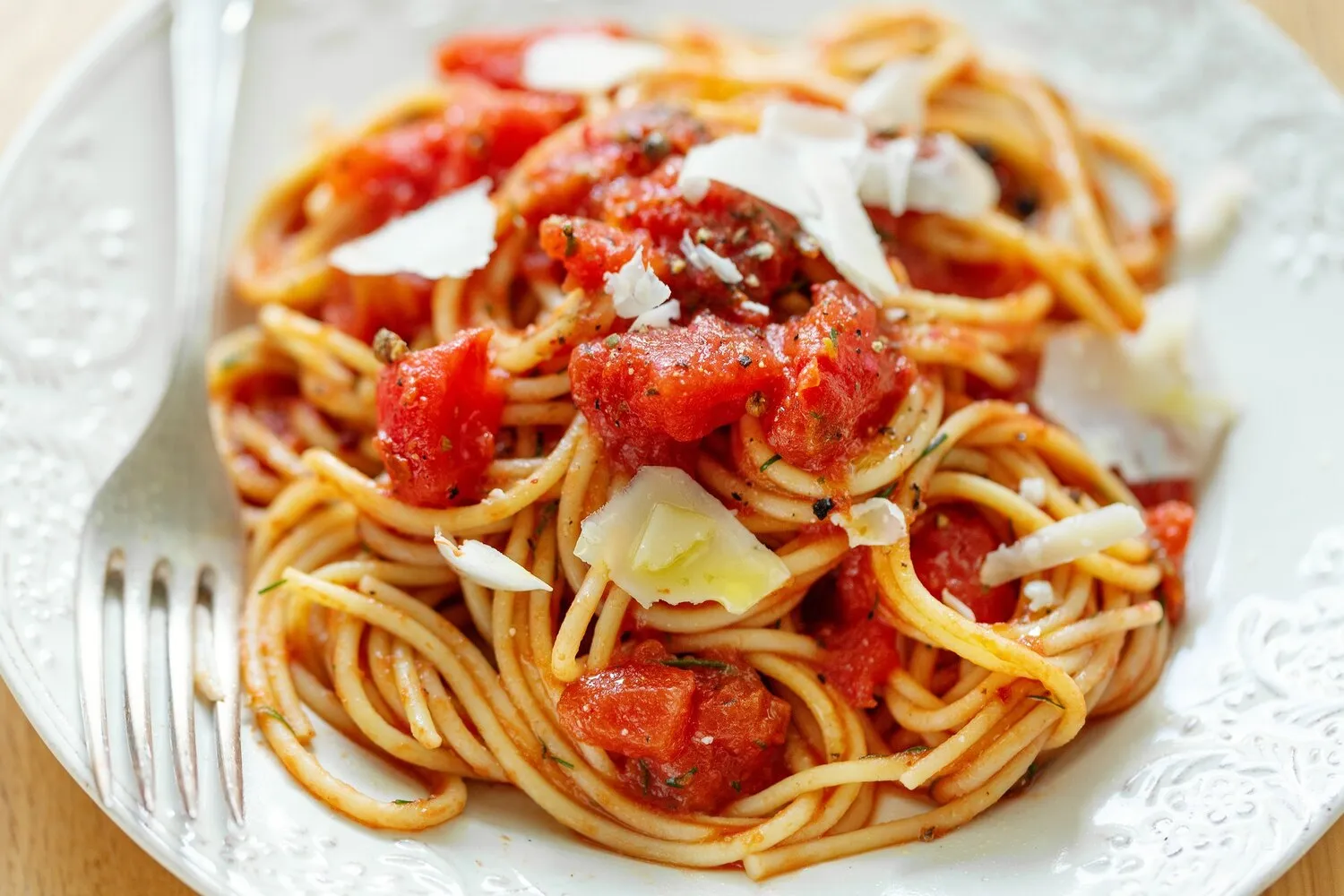
Amatriciana
Pasta dish with guanciale, tomato, pecorino romano cheese, and sometimes onion.
Nutrition Facts
* The % Daily Value (DV) tells you how much a nutrient in a serving of food contributes to a daily diet. 2,000 calories a day is used for general nutrition advice.
Amatriciana's roots lie in the Lazio region of Italy, specifically in the town of Amatrice. It evolved from a simpler dish called 'pasta alla gricia,' which used guanciale, pecorino romano, and black pepper, lacking tomatoes. The addition of tomatoes in the 18th or 19th century transformed it into the Amatriciana we know today.
Amatriciana is a staple of Roman cuisine and a symbol of culinary tradition in the Lazio region. It's a dish deeply connected to family, history, and the local ingredients of the area.
Amatrice and its Festival
The town of Amatrice is considered the birthplace of Amatriciana, and they hold an annual festival dedicated to the dish. The festival celebrates the history and tradition of the pasta sauce.
Simplicity and Authenticity
There is an emphasis on using authentic ingredients and simple preparation methods to honor the tradition and true flavors of the dish.
Regional Variations
While the core ingredients remain consistent, some regional variations exist, such as the inclusion of onion, which is a point of contention among purists.
Amatriciana is known for its rich, savory, and slightly spicy flavor profile, stemming from the combination of cured pork, tangy tomatoes, and salty cheese.
The distinctive flavor comes primarily from the guanciale, which provides a deep pork flavor and rendered fat that coats the pasta. The tomato sauce adds sweetness and acidity, while Pecorino Romano cheese lends a salty, sharp, and umami-rich dimension. A touch of chili pepper (optional) introduces a subtle heat that balances the richness of the dish. The fat from the guanciale is key, so using olive oil as a substitute doesn't yield the same flavor depth.
Guanciale is Essential
Guanciale (cured pork cheek) is non-negotiable. Bacon or pancetta are not true substitutes. Guanciale's unique fat content and flavor are critical to the dish.
Render the Guanciale Properly
Render the guanciale slowly over low heat to extract all of its flavorful fat. The guanciale should become crispy and golden brown.
Use High-Quality Tomatoes
San Marzano tomatoes are ideal, but any high-quality canned or fresh tomatoes will work. Crushed tomatoes or tomato puree are common choices.
Don't Overcook the Pasta
Cook the pasta al dente, as it will continue to cook slightly when mixed with the sauce. Traditionally, bucatini is the pasta of choice, but spaghetti is also acceptable.
Cheese is Key
Use freshly grated Pecorino Romano cheese. It adds a salty, sharp flavor that is essential to the dish. Avoid using pre-grated cheese, as it lacks the same flavor and texture.
Explore additional Italian dishes and restaurants
Explore ItalianDiscover top dining spots and culinary experiences in Roma.
Explore RomaLearn more about the food culture, restaurant scene, and culinary heritage of Italy.
Explore Italy
